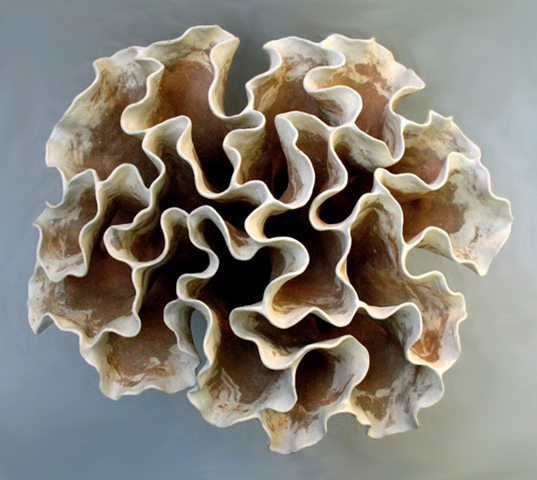

Title: Coral Bouquet Stoneware Sculpture By Artist Elizabeth Shriver
Shipping: $35.00
Artist: N/A
Period: Contemporary
History: N/A
Origin: North America > United States
Condition: Museum Quality
Item Date: 2007
Item ID: 4013
"Coral Bouquet" is a unique, organic ceramic sculpture. Fully hand-built, and unglazed, the piece is made of dark and light stoneware clay, using slab-building, coiling, and pinching methods. This sea-inspired sculpture has a graceful, lifelike feel, and its intricate, wavy surface gives the form a striking appearance.
Link: http://en.wikipedia.org/wiki/Stoneware
"Stoneware, which, though dense, impermeable and hard enough to resist scratching by a steel point, differs from porcelain because it is more opaque, and normally only partially vitrified. It may be vitreous or semi-vitreous. It is usually coloured grey or brownish because of impurities in the clay used for its manufacture, and is normally glazed."
Due to its high strength and durability stoneware has a wide range of uses, including: hotelware, kitchenware, cookware, garden products, electrical, chemical and laboratory ware. Formulations vary considerably, although the vast majority will conform to: plastic fire clays 0–100% , ball clays 0–15%, quartz, 0–30% feldspar and chamotte 0 –15%
Stoneware is generally fired once. Maximum firing temperatures can vary significantly, from 1100 °C to 1300 °C depending on the flux content. Typically temperatures will be between 1180°C to 1280°C, the higher end of which equate to Bullers Rings 38 to 40 & Seger cones 4 to 8. To produce a better quality fired glaze finish twice firing can be used, and this can be especially important for formulations composed of highly carbonaceous clays. For these, biscuit firing is around 900 °C and glost firing 1180–1280 °C. Water absorption of stoneware products is less than 1%.